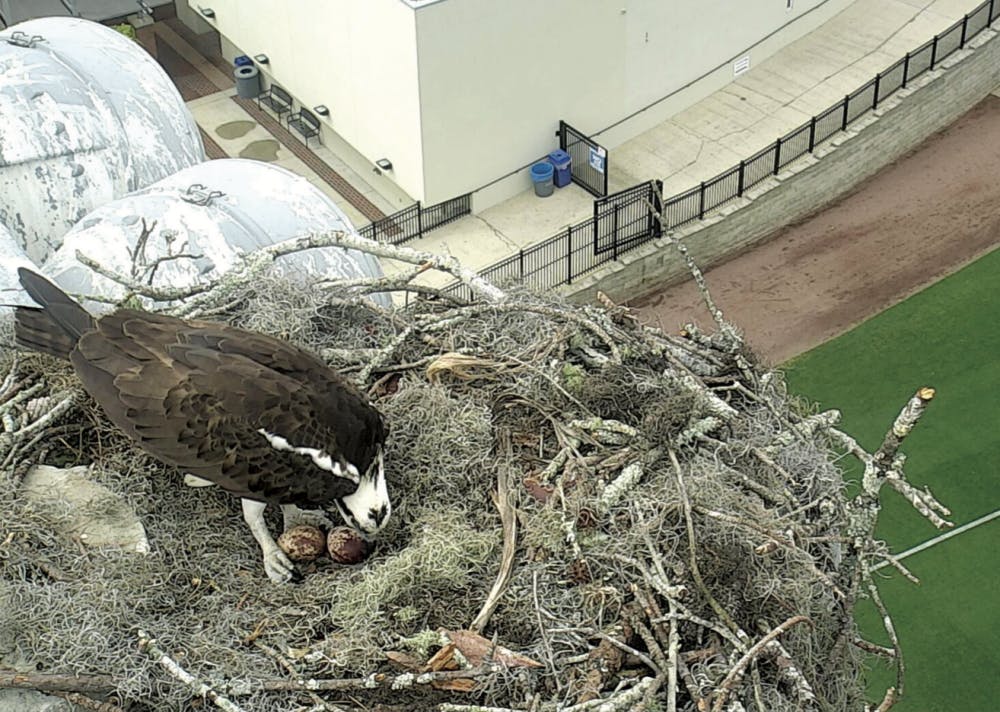Perched on a 90-foot light pole, UF’s two resident ospreys will soon add baby birds to their nest.
The male and female ospreys captured on a livestream above Alfred A. McKethan Stadium became parents to two eggs within the past week, and more may come.
The second egg came three days after the first one, which was conceived on March 9, said Mark Hostetler, a UF professor in the Department of Wildlife Ecology Conservation who helped set up the livestream.
The ospreys, who arrived at the nest on Jan. 28, and their eggs don’t have names, but they have admirers; people around the world will welcome the newborns whenever they hatch.
The livestream video of the nest, hosted on the department’s website, has been viewed more than 12,000 times on Facebook and includes comments from people in Germany, Dubai, Egypt and Argentina.
Hostetler said he hopes to host a fundraiser when the eggs hatch where people can possibly choose names. The livestream will operate until the baby ospreys hatch from their eggs in about a month and leave the nest, about two months after being born, he said.
“They literally don’t get pushed,” Hostetler said. “The parents can be encouraging. It’s natural. Even our humans, they don’t get pushed out the nest, but there’s a natural process that happens.”
Hostetler said he wasn’t surprised to see the eggs, but he was relieved. Now that the female osprey laid the eggs, the pair won’t leave the nest, so he can continue to operate the livestream — which costs about $10,000 to install and $250 monthly to run.
“Now that the eggs have laid, now I’m 100 percent confi dent they’re staying at the nest,” Hostetler said. “Up to that point, they could have moved to another nest if they so desired.”
The livestream will begin again in February 2018 at the start of mating season, he said.
Jeanette Klopchin, a 36-yearold former UF employee, said she was excited get a closer look at the birds. She said she hopes the livestream will spread awareness of wildlife to people who wouldn’t typically be interested.
“It’s just really neat and interesting to get a close-up look at a species we don’t really get to see up close,” she said. “We can see the ospreys flying in Gainesville, but I don’t think anybody’s seen the inside of a nest before.”
Though only two eggs have been laid, Hostetler said ospreys typically lay anywhere from one to four eggs, so more could be on the way.
“People just have to wait and see what happens,” he said.
Contact Romy Ellenbogen at rellenbogen@alligator.org and follow her on Twitter at @romyellenbogen
An osprey stands in its nest above UF’s Alfred A. McKethan Stadium with its two eggs. The future baby osprey’s parents, a male and female captured through a livestream established by the UF Department of Wildlife Ecology and Conservation, conceived the eggs in early March.






